US President Donald Trump unveiled a new round of tariff demand letters on Wednesday, including a 50% rate on Brazil, one of the highest so far announced for the levies which are set to hit in August.
Trump cited the treatment of former President Jair Bolsonaro — a right-wing populist leader — in his letter to Brazil, calling on authorities to drop charges against him over an alleged coup attempt. “This Trial should not be taking place. It is a Witch Hunt that should end IMMEDIATELY!” Trump wrote in the letter.
Trump on Wednesday also said he would levy a 30% rate on Algeria, Libya, Iraq and Sri Lanka, with 25% duties on products from Brunei and Moldova and a 20% rate on goods from the Philippines. The levies were largely in line with rates Trump had initially announced in April against those countries, though Iraq’s duties are down from 39% and Sri Lanka’s reduced from 44%.
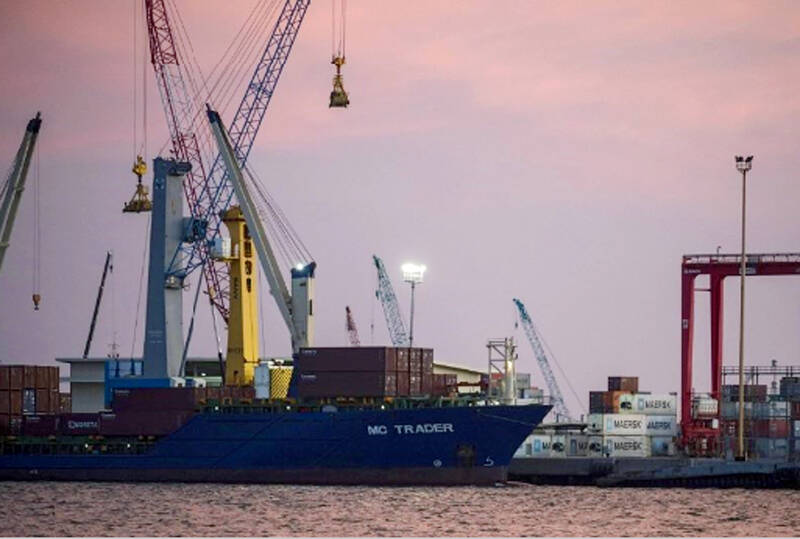
Photo: Bloomberg
Trump began notifying trading partners of new rates on Monday ahead of a deadline this week for countries to wrap up negotiations with his administration — and posted to social media that he planned to release “a minimum of 7” letters on Wednesday morning, with additional rates to be posted in the afternoon.
Brazil is the first country to receive one of Trump’s tariff notifications that was not on the initial list of trading partners when he announced higher so-called reciprocal tariffs in April. And the letter to Brazil also presents a warning shot to the BRICS group of developing nations, which Trump has cast as a threat to the US dollar’s status as the world’s key currency.
Brazil is unusual among Trump’s most recent tariff targets because it runs a deficit in trade with the US, while almost all the others post large surpluses. In 2024, Brazil imported some $44 billion of American products, while US imports from Brazil were around $42 billion, according to the Census Bureau.
Brazil ranks among the top 20 US trading partners. Out of the other seven countries cited in Trump’s announcements Wednesday, only the Philippines — which sent some $14.1 billion of goods to the US last year — makes it into the top 50.
Imports from the remaining six nations put together amounted to less than $15 billion last year, with Iraq — an exporter of crude oil — accounting for about half of that sum.
Asked what formula he was using to determine the appropriate duty rate for trading partners, Trump told reporters at a White House event on Wednesday that it was “based on common sense, based on deficits, based on how we’ve been over the years, and based on raw numbers.”
“They’re based on very, very substantial facts, and also past history,” he said.
So far, the latest warnings have done little to rattle markets, with traders focusing on Trump’s overall extension of the deadline for the so-called reciprocal tariffs to Aug. 1. That’s effectively given trading partners an extension for talks and initially fueled skepticism on Wall Street that he would follow through on his import taxes.
But the move on Brazil shook the real, which slumped as much as 2.9% against the US dollar, while the $5.35 billion iShares MSCI Brazil ETF — the largest US-listed exchange-traded fund tracking the nation’s equities — was down 1.8% in postmarket trading.
Trump added to uncertainty earlier this week by claiming he was “not 100% firm” on that new cut-off date for talks. He has since sought to signal to investors and trading partners that he is committed to carrying out his tariff threats, vowing Tuesday that “all money will be due and payable starting AUGUST 1, 2025 — No extensions will be granted” on country-specific levies.
Deputy Treasury Secretary Michael Faulkender on Wednesday indicated that even if tariffs kicked into effect, negotiations could continue beyond the August deadline.
“There’s enormous progress that has been made with many of these countries, and for some of them it is just finalizing some of the terms of the framework,” he said in an interview with Bloomberg Television. “Now obviously, the details of the trade agreement will be worked out well beyond August 1st, but a general framework is the objective to have by August 1st.”
The president has also raised the stakes for two key trading partners, saying the European Union could receive a unilateral tariff rate soon despite progress in negotiations, and vowing to hit India with an additional 10% levy for its participation in the BRICS.
And he’s raised the specter of more industry-specific tariffs, floating a 50% rate on copper products that sent that metal climbing as high as 17% in New York on Tuesday, a record one-day spike. He also pitched tariffs as high as 200% on pharmaceutical imports if drug companies don’t shift production to the US in the next year.
The barrage of letters and fresh tariff threats marked the latest turn in a dizzying trade agenda that has spurred volatility in markets and left consumers, businesses and trading partners anxious about the impact on trade flows and the global economy.
Trump initially announced the so-called reciprocal tariffs on April 2, but after markets reacted with alarm, paused the higher duties to 10% for a 90-day negotiating period that was set to end on Wednesday, July 9 before the latest three-week extension.
Trump’s letters on Monday targeted countries including Japan, South Korea, South Africa, Indonesia, Thailand and Cambodia. Most of the tariff rates, however, were largely in line with what Trump had already announced the nations were likely to face.
While Trump has touted his tariff notification letters as deals, even the actual agreements he has managed to strike during the negotiating period with the UK and Vietnam have been far short of comprehensive, leaving many details unclear. Trump also secured a truce with China to lower rates and ease the flow of critical earth minerals.
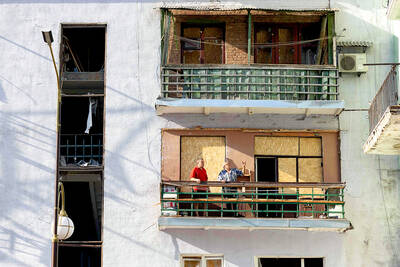
DEADLOCK: Putin has vowed to continue fighting unless Ukraine cedes more land, while talks have been paused with no immediate results expected, the Kremlin said Russia on Friday said that peace talks with Kyiv were on “pause” as Ukrainian President Volodymyr Zelenskiy warned that Russian President Vladimir Putin still wanted to capture the whole of Ukraine. Meanwhile, US President Donald Trump said that he was running out of patience with Putin, and the NATO alliance said it would bolster its eastern front after Russian drones were shot down in Polish airspace this week. The latest blow to faltering diplomacy came as Russia’s army staged major military drills with its key ally Belarus. Despite Trump forcing the warring sides to hold direct talks and hosting Putin in Alaska, there
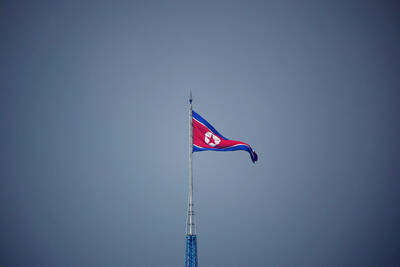
North Korea has executed people for watching or distributing foreign television shows, including popular South Korean dramas, as part of an intensifying crackdown on personal freedoms, a UN human rights report said on Friday. Surveillance has grown more pervasive since 2014 with the help of new technologies, while punishments have become harsher — including the introduction of the death penalty for offences such as sharing foreign TV dramas, the report said. The curbs make North Korea the most restrictive country in the world, said the 14-page UN report, which was based on interviews with more than 300 witnesses and victims who had
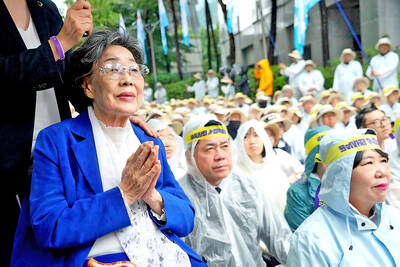
COMFORT WOMEN CLASH: Japan has strongly rejected South Korean court rulings ordering the government to provide reparations to Korean victims of sexual slavery The Japanese government yesterday defended its stance on wartime sexual slavery and described South Korean court rulings ordering Japanese compensation as violations of international law, after UN investigators criticized Tokyo for failing to ensure truth-finding and reparations for the victims. In its own response to UN human rights rapporteurs, South Korea called on Japan to “squarely face up to our painful history” and cited how Tokyo’s refusal to comply with court orders have denied the victims payment. The statements underscored how the two Asian US allies still hold key differences on the issue, even as they pause their on-and-off disputes over historical
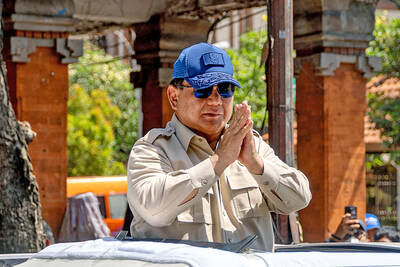
CONSOLIDATION: The Indonesian president has used the moment to replace figures from former president Jokowi’s tenure with loyal allies In removing Indonesia’s finance minister and U-turning on protester demands, the leader of Southeast Asia’s biggest economy is scrambling to restore public trust while seizing a chance to install loyalists after deadly riots last month, experts say. Demonstrations that were sparked by low wages, unemployment and anger over lawmakers’ lavish perks grew after footage spread of a paramilitary police vehicle running over a delivery motorcycle driver. The ensuing riots, which rights groups say left at least 10 dead and hundreds detained, were the biggest of Indonesian President Prabowo Subianto’s term, and the ex-general is now calling on the public to restore their